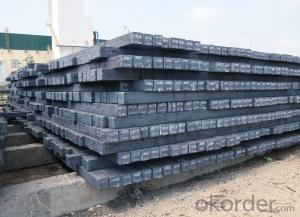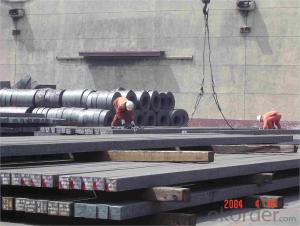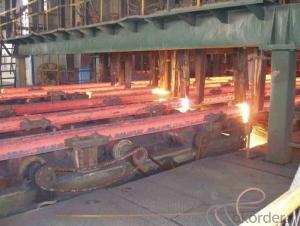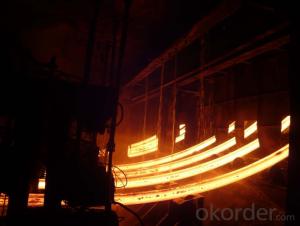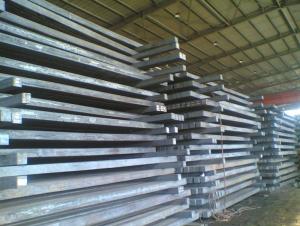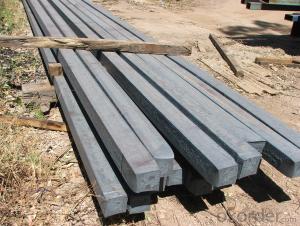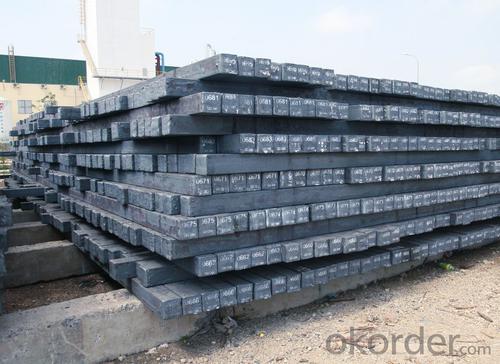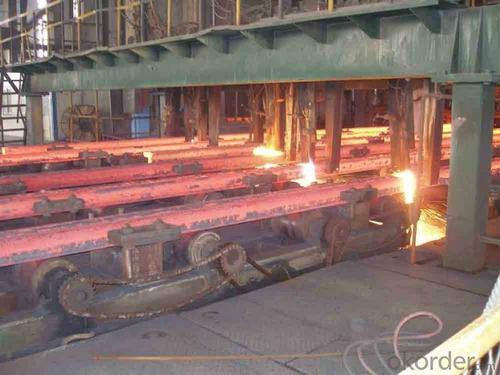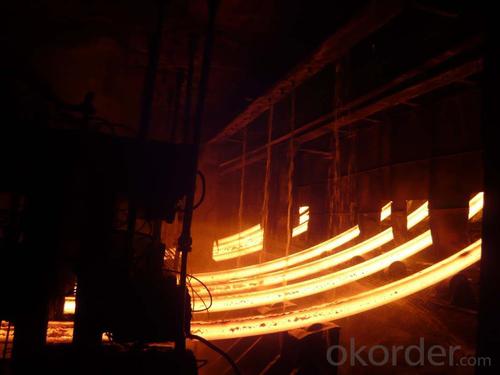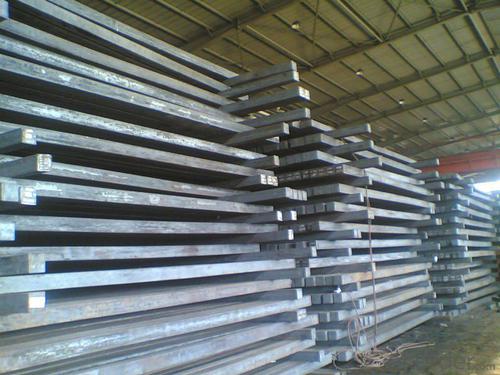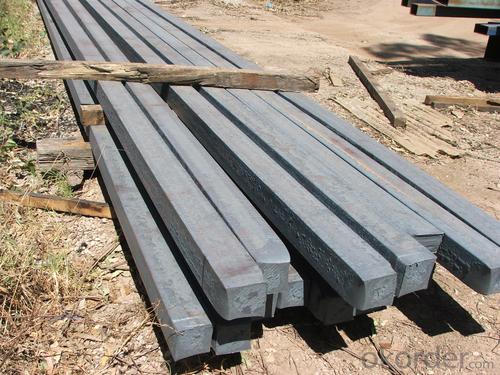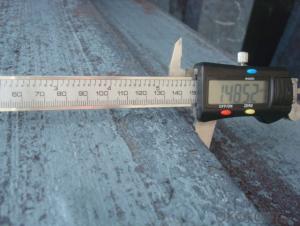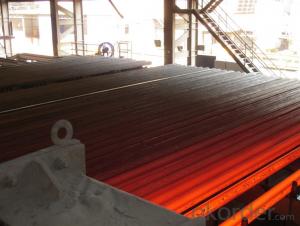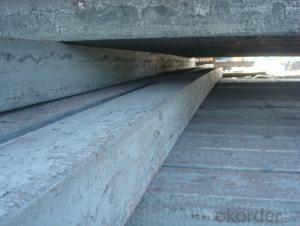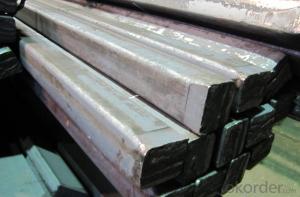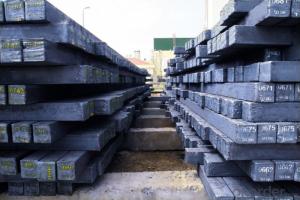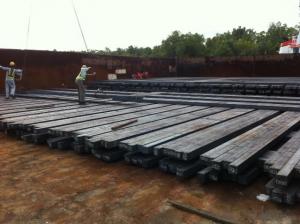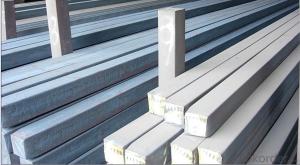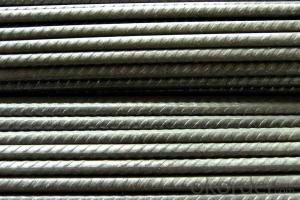Q235/3SP 160MM Blast Furnace Hot Rolled Steel Billet
- Loading Port:
- Tianjin
- Payment Terms:
- TT OR LC
- Min Order Qty:
- 2000 m.t.
- Supply Capability:
- 30000 m.t./month
OKorder Service Pledge
OKorder Financial Service
You Might Also Like
Description of Q235/3SP 160MM Blast Furnace Hot Rolled Steel Billet
Our hot dip galvanised steels consist of a steel substrate with a metallic zinc coating applied by means of a continuous hot dip galvanising process. Metallic zinc coatings are available in steel grades ranging from steel for bending and deep drawing applications, to structural steels and high yield strength steels.
A glossy surface finish obtained under specific skin-pass conditions (either non-skin-passed or skin- passed with smooth cylinders to obtain low roughness) can be provided if required at time of enquiry.
Advantage of Q235/3SP 160MM Blast Furnace Hot Rolled Steel Billet
Uncoated CR steel sheet With the features of in line with the international highest standards in demension and shape, excellent surface finish and properties, the products are mainly used in home appliance and automobile industries.
Galvanized steel sheet(include HDG and EG)
With the features of good corrosion resistance, the products are mainly used in automobile, home appliance, electronics, building and machinery manufacture industries, etc.
Precoated steel sheet With the features of enviromental protection and good processablility, long lasting surface durability, rich in colors, the products are maily used in building, home appliance and furniture industries, etc.
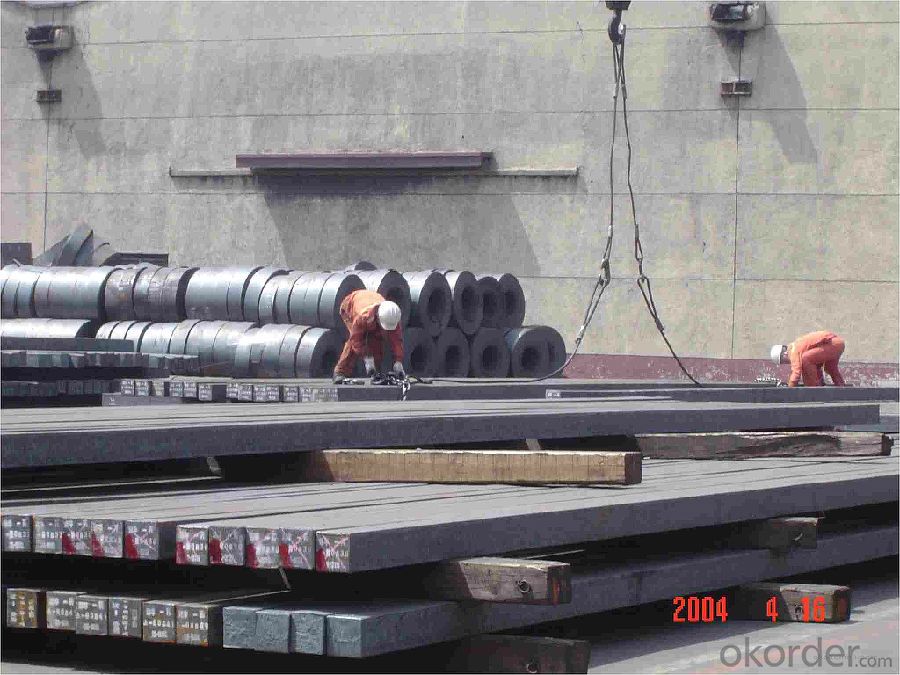
Applications of Q235/3SP 160MM Blast Furnace Hot Rolled Steel Billet
Our hot dip galvanised steels can be used in a very wide range of applications for industrial markets, both indoors and outdoors. Some of the most common applications are:
Building: wide sections for roofing and cladding, doors, door frames, metallic ceilings, partitions, structural members etc
Domestic appliances: all appliances for this sector (both white and brown goods) are manufactured with hot dip galvanised steels
Miscellaneous: electrical cabinets, aeraulic components, air conditioners, road signs etc
Zinc hot dip galvanised steel is suitable for contact with foodstuffs under certain conditions, as specified in European directive 89/109/EEC and French standard NF A 36-712-1. Please contact us for further information on this subject.
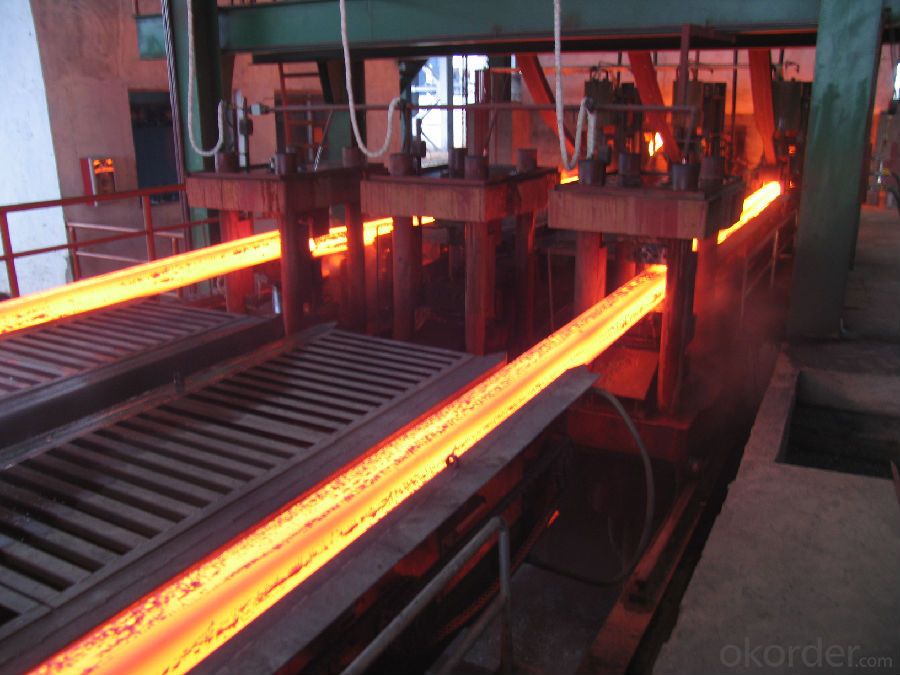
Specifications of Q235/3SP 160MM Blast Furnace Hot Rolled Steel Billet
Quality | Q/BQB 440-2003 | JIS G3312-1994 JIS G3321 | EN 10326-2004 | ASTM A653-02a |
EN 10327-2004 | (BASE PLATE) | |||
(BASE PLATE) | ||||
Commercial Steel | DC51D | SGCC SGLCC | DX51D+Z DX51D+AZ | CS Type A/B/C |
Forming Steel | St01,St02,St03 | SGCD1 SGLCD1 | FS Type A, Type B | |
Drawing | DC52D /DC53D | - | DX52D+Z DX52D+AZ | DDS TYPE A/C |
Steel | DX53D+Z DX53D+AZ | |||
Structural | S280GD (StE28) | SGC400 SGLC400 | S280D+Z DX54D+AZ | SS275 |
Steel | S350GD (StE34) | SGC440 SGLC440 | S350D+Z S350D+AZ | SS340 Class1 |
FAQ of Q235/3SP 160MM Blast Furnace Hot Rolled Steel Billet
We have organized several common questions for our clients,may help you sincerely:
1. How Can I Visit There?
Our company is located in Tianjin City, China, near Beijing. You can fly to Tianjin Airport Directly. All our clients, from home or aboard, are warmly welcome to visit us!
2. How Can I Get Some Sample?
We are honored to offer you sample.
3. Why choose CNBM?
Our delivery time about 15-20days for standard sizes, if you have other requirements like hardness, quanity and width ,it is about 20-40days. But don't worry we also try our best for the delivery time ,because time longer and our cost is higher.
- Q: What is the cost of a steel billet?
- The cost of a steel billet can vary depending on several factors such as the size, grade, and market conditions. Steel billets are semi-finished products that serve as raw material for various steel products. The price of a steel billet is typically quoted per metric ton. To determine the cost, one must consider the current market price of steel, which can fluctuate due to factors like supply and demand, international trade policies, and global economic conditions. Additionally, the grade of steel billet can impact the cost as different grades have varying levels of purity and specifications. It is essential to reach out to steel suppliers or consult market reports to get accurate and up-to-date information on the cost of steel billets. Additionally, other factors such as transportation and handling costs may also influence the final price.
- Q: What are the main challenges in steel billet production?
- Some of the main challenges in steel billet production include maintaining consistent quality, optimizing production processes to minimize energy consumption and waste, ensuring proper inventory management to meet customer demand, and dealing with fluctuations in raw material prices. Additionally, meeting environmental regulations and addressing safety concerns are also significant challenges in steel billet production.
- Q: What are the different types of cutting techniques used for steel billets?
- There are several different cutting techniques used for steel billets, including sawing, shearing, and flame cutting.
- Q: How are steel billets used in the manufacturing of automotive parts?
- Steel billets are an essential raw material used in the manufacturing of automotive parts. These billets, which are typically short, solid pieces of steel, serve as the starting point for various automotive components. Firstly, steel billets are heated and then passed through a series of rolling mills to convert them into different shapes and sizes. This process, known as hot rolling, allows the steel billets to be transformed into bars, rods, or sheets that can be further machined or formed into automotive parts. The automotive industry relies heavily on steel billets to produce a wide range of components, such as engine blocks, crankshafts, suspension parts, and chassis frames. These parts require high strength and durability to withstand the demanding conditions of vehicles. Engine blocks, for example, are typically made from cast iron or aluminum alloys produced from steel billets. The billets are melted and poured into molds to create the desired shape, which forms the foundation of the engine. Similarly, crankshafts, which transfer power from the engine to the wheels, are often forged from steel billets to ensure strength and precision. Suspension parts, such as control arms and torsion bars, also rely on steel billets for their manufacturing. These parts need to withstand the forces and impact of the road, and steel provides the necessary strength and resilience. Billets are machined and shaped to create the required geometry and then assembled with other components to form the suspension system. Additionally, steel billets are used in the production of chassis frames, which provide the structural integrity and support for the entire vehicle. These frames are typically made from steel tubes or sections formed from billets. The billets are shaped, welded, and joined together to create a strong and rigid framework that gives stability and ensures safety. In conclusion, steel billets play a crucial role in the manufacturing of automotive parts. With their versatility and strength, they are transformed into various components that form the backbone of vehicles, ensuring durability, performance, and safety on the road.
- Q: What are the common grades of steel used for billets?
- The common grades of steel used for billets include mild steel, carbon steel, and alloy steel.
- Q: What are the main factors affecting the microstructure of steel billets?
- The main factors affecting the microstructure of steel billets include the composition of the steel, the cooling rate during solidification, the presence of impurities or alloying elements, and the heat treatment processes applied.
- Q: What are the specifications for steel billets used in the aerospace industry?
- The specifications for steel billets used in the aerospace industry are highly precise and stringent. These billets are required to meet specific standards in order to ensure the safety and durability of aircraft components. First and foremost, the steel used for aerospace billets must have exceptional strength and toughness. It should have a high tensile strength and be capable of withstanding extreme forces and stresses that may be encountered during flight. The steel must also have excellent fracture resistance to minimize the risk of catastrophic failure. Additionally, the steel billets must possess excellent resistance to corrosion and oxidation. This is crucial as aircraft often operate in harsh environments, including high altitudes and exposure to various chemicals. The steel should be resistant to rust, pitting, and other forms of degradation that can compromise its structural integrity over time. Furthermore, the steel billets used in aerospace applications must have precise dimensional tolerances and uniformity. The billets should be manufactured to exact specifications to ensure consistency in the production of aircraft components. This includes the size, shape, and surface finish of the billets, which are crucial for proper fitting and assembly. In terms of chemical composition, the steel used for aerospace billets may vary depending on the specific application and component being manufactured. However, it typically includes elements such as carbon, manganese, chromium, nickel, and molybdenum. These alloying elements enhance the mechanical properties of the steel, such as hardness, toughness, and heat resistance. Furthermore, the steel billets used in the aerospace industry undergo rigorous testing and quality control procedures. This includes non-destructive testing methods like ultrasonic inspection, magnetic particle inspection, and dye penetrant inspection to detect any internal defects or discontinuities. In summary, the specifications for steel billets used in the aerospace industry involve exceptional strength, toughness, corrosion resistance, dimensional accuracy, and precise chemical composition. These strict requirements ensure the reliability and safety of aircraft components, making them capable of withstanding the demanding conditions faced during flight.
- Q: How do steel billets compare to other types of raw materials in manufacturing?
- Steel billets are highly valued in manufacturing due to their superior qualities and diverse applications. Compared to other raw materials, steel billets offer exceptional strength, durability, and versatility. They can be easily shaped, molded, and forged to meet specific design requirements. Steel billets also exhibit excellent heat resistance, corrosion resistance, and electrical conductivity, making them suitable for a wide range of industries, including construction, automotive, and machinery. Additionally, steel billets are readily available, cost-effective, and have a relatively low environmental impact, further enhancing their appeal as a raw material in manufacturing processes.
- Q: How are steel billets used in the manufacturing of electrical transmission equipment?
- Steel billets are used in the manufacturing of electrical transmission equipment as a key raw material. These billets are essentially solid blocks of steel that undergo further processing to transform them into various components required for electrical transmission equipment. One of the main uses of steel billets in this context is for the production of transmission towers. These towers provide the infrastructure needed to support power lines and ensure the safe and efficient transmission of electricity over long distances. Steel billets are used to manufacture the structural components of these towers, including the main vertical and horizontal members, as well as the cross arms and braces. Additionally, steel billets are also used in the manufacturing of conductors for electrical transmission equipment. Conductors are the cables that carry the electrical current between power generation stations and distribution networks. Steel billets are processed to create the necessary wires and strands that are then used to construct these conductors. The high strength and durability of steel make it an ideal material choice for these applications, as it can withstand the high tension and load requirements of electrical transmission systems. Furthermore, steel billets are used in the production of various other components used in electrical transmission equipment, such as pole line hardware, insulators, and connectors. These components are crucial for the proper functioning and reliability of the electrical transmission system, and steel billets provide the necessary strength and stability required for their construction. In summary, steel billets play a vital role in the manufacturing of electrical transmission equipment. They are used to produce transmission towers, conductors, and other essential components, ensuring the safe and efficient transmission of electricity across long distances.
- Q: What are the main factors affecting the creep resistance of steel billets?
- The main factors affecting the creep resistance of steel billets include the composition of the steel, the temperature at which the billets are exposed, the applied stress, and the microstructure of the steel.
Send your message to us
Q235/3SP 160MM Blast Furnace Hot Rolled Steel Billet
- Loading Port:
- Tianjin
- Payment Terms:
- TT OR LC
- Min Order Qty:
- 2000 m.t.
- Supply Capability:
- 30000 m.t./month
OKorder Service Pledge
OKorder Financial Service
Similar products
Hot products
Hot Searches
Related keywords
